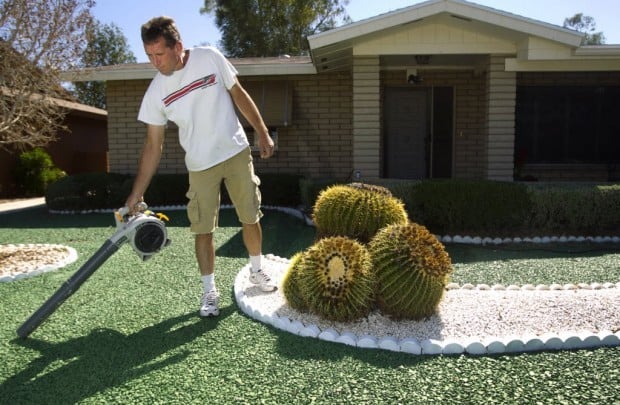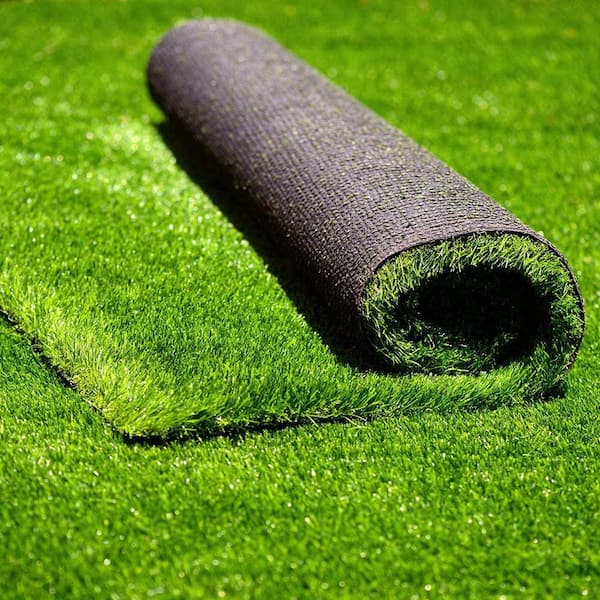Artificial Grass: The Eco-Friendly Option for Lasting Landscape Design
Artificial Grass: The Eco-Friendly Option for Lasting Landscape Design
Blog Article
Artificial Yard: The Ultimate Service for Easy Grass Care
Man-made turf has been progressively getting appeal as a hassle-free alternative to conventional yard upkeep. From installation intricacies to long-lasting expense comparisons and environmental effects, the decision to opt for synthetic lawn involves a nuanced analysis.
Advantages of Artificial Grass
Fabricated grass provides a practical option for those looking for a stunning yard without the headache of consistent upkeep. Unlike all-natural turf, which requires normal watering, mowing, weeding, and fertilizing, synthetic yard stays vivid and green with very little initiative.
Additionally, artificial yard supplies a continually neat and well-manicured appearance throughout the year. Its longevity allows it to withstand hefty foot traffic, harsh weather, and family pets without revealing indicators of damage - Artificial Grass. This strength makes certain that your exterior space remains excellent and welcoming, improving the total visual of your property
Furthermore, man-made yard is an affordable choice over time, as it eliminates the demand for expensive maintenance tools, water costs, and specialist services. Its initial setup expense is rapidly balanced out by the savings built up from decreased maintenance costs, making it a smart investment for property owners seeking to boost their exterior rooms effortlessly.

Installation Refine
The seamless combination of synthetic grass into exterior rooms starts with a careful setup process that ensures a aesthetically enticing and long-term outcome. The existing lawn or surface is thoroughly excavated to produce a smooth and degree base for the man-made lawn to be laid upon.
Following this, a layer of compacted sand or accumulation is spread and leveled to additionally improve the security and drainage of the synthetic grass. This in-depth setup procedure is vital in attaining a flawless and long-lasting artificial turf yard.
Upkeep Tips
To maintain the pristine look and capability of your artificial yard yard, routine upkeep methods are essential. Additionally, rinsing the man-made grass with water regularly can help eliminate dust and tiny particles that might settle on the fibers.

Furthermore, if you have pet dogs, it is vital to cleanse up after them immediately to stop smells and bacterial growth on the man-made grass surface. By adhering to these maintenance suggestions, you can make certain that your synthetic yard yard remains in leading problem for many years to find.
Cost Contrast With Natural Lawn
Contrasting the general costs in between fabricated grass and natural lawn reveals substantial distinctions that can impact advice lasting upkeep expenses. Synthetic turf calls for minimal upkeep contrasted to natural lawn, which entails normal watering, mowing, feeding, and parasite control.
In the long run, synthetic turf confirms to be more economical as it eliminates the need for these regular upkeep tasks. In addition, synthetic yard is immune and resilient to tear and use, reducing the demand for replacements and repairs that prevail with all-natural turf. By thinking about the total expenses involved in maintaining a lawn, man-made turf becomes a monetarily sensible option for homeowners aiming to minimize lawn treatment expenses over time.
Environmental Effect of Artificial Yard
Given the economic benefits of choosing for artificial turf over natural grass, it is essential to evaluate the environmental impact connected with the usage of synthetic turf. While fabricated lawn removes the demand for water, pesticides, and mowing, it website link postures certain environmental worries.
Moreover, artificial lawn can bring about warm retention in urban locations, affecting regional microclimates and raising power intake for air conditioning. The lack of natural soil and greenery also prevents water absorption and contributes to emerge runoff, possibly resulting in water pollution. Additionally, the disposal of fabricated turf at the end of its lifespan presents an obstacle, as recycling choices are minimal and commonly not commonly offered. Consequently, while fabricated lawn offers benefit, its ecological effect should be very carefully taken into consideration in decision-making processes.
Final Thought

In conclusion, artificial grass provides a low-maintenance and affordable solution for preserving a beautiful yard. When compared to natural yard, synthetic yard needs less water and upkeep, making it an eco pleasant option.
Comparing the general costs in between artificial grass and all-natural turf exposes significant differences that can affect lasting upkeep costs. Man-made yard calls for marginal upkeep compared to all-natural yard, which requires routine watering, mowing, feeding, and parasite control. Additionally, artificial lawn is resistant and durable to tear and wear, minimizing the demand for substitutes and repair services that are common with natural yard.Offered the economic benefits of deciding for man-made turf over all-natural yard, it is critical to evaluate the environmental impact associated with the usage of synthetic turf. When compared to natural turf, synthetic lawn needs much less water and upkeep, making it an eco pleasant option.
Report this page